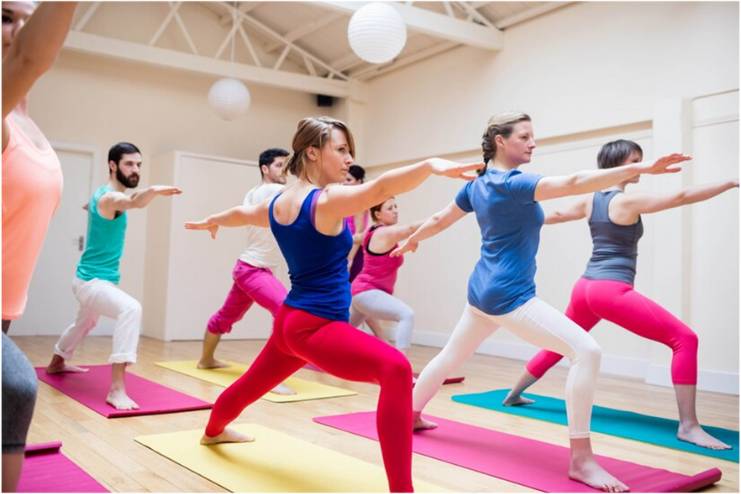Affiliate Disclaimer
Some links in this article are affiliate links. We may earn a small commission if you make a purchase through these links, at no extra cost to you. We only recommend products we find useful to our readersDiabetes has emerged as a major threat due to sedentary lifestyles and unhealthy diets. However, physical activity is an effective way to avoid this disease. In this article we discuss how exercise helps you prevent the risk of diabetes, the benefits of exercise, and practical ways to integrate exercise into everyday life.
The Importance of Exercise in Preventing Diabetes
Regular physical activity is crucial for preventing diabetes, particularly type 2 diabetes. Exercise not only helps with weight management but also boosts insulin sensitivity, lowers blood sugar levels, and reduces the overall risk of developing diabetes. Studies have shown that regular exercise can decrease the likelihood of developing diabetes by up to 58% in high-risk individuals, such as those with prediabetes.
Physical activity is essential for the prevention of diabetes, particularly type 2. Exercising can not only help with the control of body weight but also increase insulin sensitivity, reduce blood sugar levels, and reduce the overall risk of developing diabetes.

Benefits of Regular Physical Activity
The primary way in which physical activity helps prevent diabetes is by improving how the body manages blood sugar and insulin. Here’s how it works in detail:
- Enhancing Insulin Sensitivity: Insulin helps the body cells take glucose from the bloodstream to provide energy. The body becomes less sensitive to insulin in an individual at risk for diabetes, especially those with prediabetes. In this condition the pancreas will start to produce even more insulin to control blood sugar levels. Read the science of insulin sensitivity in detail. This path will lead to the development of type 2 diabetes if not checked. Regular exercise makes the cells sensitive to insulin. That is, smaller concentrations of insulin will be enough to lower blood sugar, thereby preventing the progression of what may eventually become diabetes. Physical exercise increases the body’s sensitivity to insulin up to 72 hours following an exercise. This makes constant physical activity very relevant in the prevention of developing the condition in the long term.
- Weight Management and Fat Reduction: Obesity is one of the major risk factors for developing diabetes, particularly abdominal obesity. The excess body fat, especially visceral body fat in the abdomen, promotes the release of inflammatory chemicals that encourage insulin resistance. Exercise helps reduce body fat, particularly visceral fat, the dangerous fat that surrounds internal organs and increases diabetes risk. Maintaining a healthy weight through exercising helps reduce the pressure on the metabolic system and prevents imbalances in the hormones that cause diabetes. Even a loss of 5-10% of body weight can reduce the risks of developing diabetes drastically.
- Blood Sugar Regulation: Additionally, regular exercise helps the liver store glucose more effectively, preventing excess glucose from being released into the blood between meals. This stabilizes blood sugar levels and reduces the spikes and dips that contribute to diabetes development. Regular exercise also enables glycogen to be stored in the liver, from which it would not be released into the bloodstream between meals. Thus, exercise helps stabilize the ups and downs that tend to make blood glucose fluctuate and thereby lead to the development of diabetes.
- Reduction of Inflammation: Regular exercise prevents the onset of diabetes and also reduces complications in those already diagnosed with prediabetes or diabetes. Exercise helps in cardiovascular health improvement through reduction in blood pressure, better cholesterol level, and increased circulation. This is very important for diabetics because they are more prone to suffering from heart disease, stroke, and other complications.
- Improved Muscle Function and Glucose Uptake: Regular exercise, especially strength training, increases the lean muscle mass of the body which would help manage blood sugar levels. Muscle tissue requires more glucose to generate energy, so an increase in muscle mass through exercise would facilitate the consumption of more glucose that, in turn, would keep the blood sugar level at a lower level. Stronger muscles also promote a healthier metabolism, enabling the body to process nutrients more efficiently and reducing the likelihood of insulin resistance.
Types of Exercises Suitable for Individuals with Prediabetes

- Aerobic Exercises: Aerobic exercises to be done include brisk walking, jogging, swimming, and cycling, among others. And it is a fantastic way of bringing up the heart rate as well as one of the best exercises for improving insulin sensitivity. Exercise to achieve at least 150 minutes of moderate-intensity aerobic exercise per week for optimal benefits.
- Strength Training: Strengthening exercises, such as weightlifting or resistance band use, support muscle growth and enhance the body’s ability to metabolize glucose. Strength training more than twice a week can lead to maximum improvement in metabolic health.
- Flexibility and Balance Exercises: Other practices, such as yoga and tai chi, improve flexibility and balance and reduce stress, a known factor for increasing blood sugar. Such practices can complement aerobic and strength training routines.
Practical Tips for Incorporating Physical Activity into Your Daily Routine
- Start Slow and Build Up: Beginners should start slow and increase the duration and intensity gradually. Even 10-minute walks can add up to meet daily goals.
- Set Realistic Goals: Achievable goals will keep a person motivated. Keeping track of progress and rewarding minor victories will keep you on the right path long-term to continue an active life.
- Find Enjoyable Activities: Habits are easier to keep if you choose exercises you like, whether it is dancing, hiking, or playing a sport. Consistency is the key here in preventing diabetes.
- Incorporate Activity into Daily Tasks: Everyday activities like walking during breaks, taking the stairs, or even doing household chores. Small changes make big impacts on health.
- Seek Support: You can exercise with friends or family, or join a class/group for more enjoyable sessions. Social support helps in terms of accountability and increases the motivation level.
Conclusion
Physical activity is an effective prevention and management strategy for prediabetes and diabetes. Exercise improves your body’s sensitivity to insulin and controls your blood sugar. It also enhances cardiovascular health. More than one form of physical activity can be added to the list of simple lifestyle changes to substantially reduce the risk of diabetes. Start today-every step counts!
In this Article


















